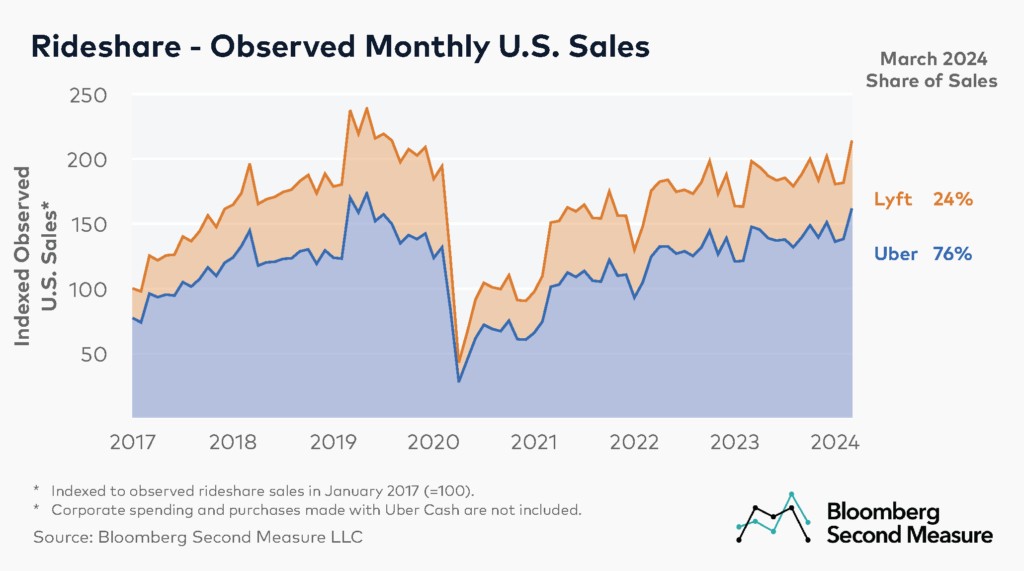The rideshare industry, dominated by Uber and Lyft, experienced significant disruption during the COVID-19 pandemic. While both companies saw sales plummet due to lockdowns and reduced mobility, their recovery trajectories have differed markedly. This article examines how Lyft’s performance compares to Uber’s in the U.S. market, analyzing sales, market share, and average customer spending.
Uber’s Market Dominance and Profitability
As of March 2024, Uber holds a commanding lead in the U.S. rideshare market. Data reveals Uber’s observed U.S. sales grew by 10% year-over-year, compared to Lyft’s 3% increase. This disparity is further highlighted by Uber surpassing pre-pandemic sales levels in April 2022, while Lyft has yet to achieve this milestone.
Uber’s financial performance also underscores its stronger position. The company reported its first-ever operating profit in Q2 of FY23, driven largely by the robust growth of its Rides business. This success continued, culminating in Uber’s first annual operating profit in FY23. In March 2024, Uber controlled 76% of the observed U.S. rideshare market, maintaining its dominant position.
Consumer Spending and Inflation’s Impact
Despite a period of high inflation in 2021 and 2022, both Uber and Lyft have seen increases in average monthly sales per customer. As of March 2024, Uber’s average monthly sales per customer reached $107, a 6% year-over-year increase and a 17% rise from March 2022. Lyft’s average sales per customer reached $95 in March 2024, reflecting a 5% increase year-over-year and an 8% increase from March 2022.
Both companies exhibit similar seasonal spending patterns, with a dip in per-customer spending during winter months followed by a surge in late winter or early spring. Between February and March 2024, Uber saw a 6% increase in average sales per customer, while Lyft experienced a 5% increase.
Diversification and Innovation
Both companies are actively pursuing expansion and innovation. Uber has diversified its portfolio beyond ridesharing, venturing into meal delivery, grocery delivery, alcohol delivery, and package delivery. The company also introduced its Uber One membership program, offering premium benefits for both rides and deliveries, and Uber Explore, allowing users to book experiences through the app. Furthermore, Uber’s partnership with Waymo to integrate self-driving cars into its services signals a commitment to future-oriented technologies.
Lyft, while primarily focused on ridesharing, has entered the food delivery market through a partnership with Olo. It continues to enhance its core ridesharing service with features like pre-ordering cars for airport pickups.
Conclusion
While both Uber and Lyft have navigated the challenges of the pandemic and economic fluctuations, Uber has clearly emerged as the stronger competitor. Its market dominance, consistent profitability, and aggressive diversification strategy position it favorably for continued success. Lyft, while demonstrating growth, faces the challenge of closing the gap with Uber and achieving pre-pandemic sales levels. The long-term success of both companies will likely depend on their ability to adapt to evolving consumer demands and innovate within the dynamic transportation landscape.

